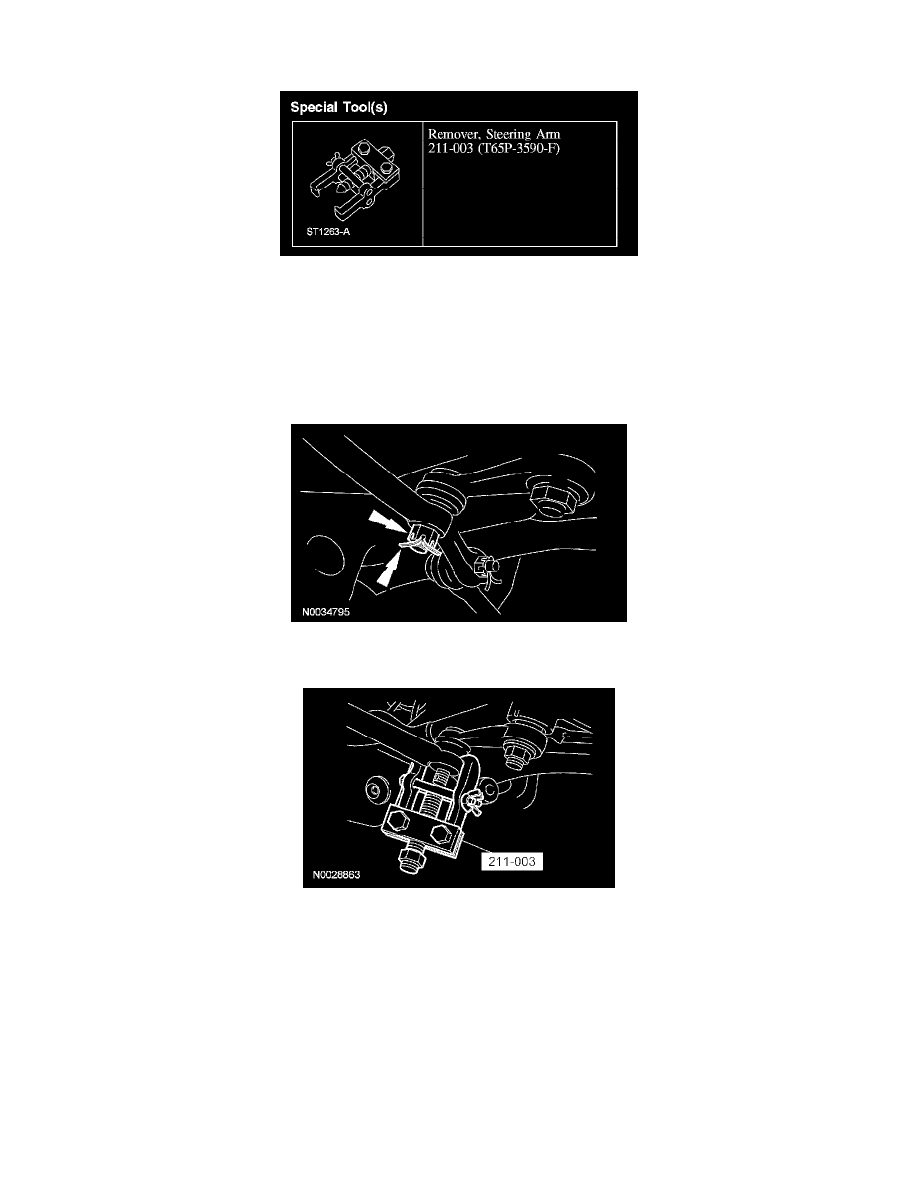E 350 V10-6.8L (2007)

Steering Gear: Adjustments
Steering Gear Meshload Adjustment
Special Tool(s)
1. NOTE: The engine should not be running.
Turn the steering wheel from right lock to left lock at least once.
2. Remove the driver air bag. For additional information, refer to Air Bag Systems.
3. With the vehicle in NEUTRAL, position it on a hoist. For additional information, refer to Maintenance/Service and Repair.
4. Remove the drag link-to-sector shaft arm cotter pin and nut.
5. Separate the steering sector shaft arm drag link.
^
Use the Pitman Arm Puller to separate the steering sector shaft arm drag link.
6. NOTE: The front wheels should not touch the ground.
Rotate the steering wheel to the left stop and then rotate the steering wheel back approximately 45°.
7. NOTE: The peak preload torque must be within 0.34 - 1.36 Nm (3 - 12 inch lbs.) or a new steering gear must be installed.
Attach an inch lbs. torque wrench to the steering wheel bolt and slowly and evenly rotate the steering wheel clockwise 1/2 turn (180°).
^
Record the peak preload torque.
8. Rotate the steering wheel to its centered position (approximately 1-1/2 turns from either stop). Place the torque wrench on the steering wheel bolt
with the handle in the vertical position. Rotate the torque wrench slowly and evenly 1/4 turn (90°) from each side of center.
^
Record the peak on-center torque.
9. NOTE: The on-center torque must be 0.28 - 0.79 Nm (2.5 - 7 inch lbs.) greater than preload torque without exceeding a total of 2.15 Nm (19
inch lbs.) The on-center torque minus the preload torque is the meshload torque.
